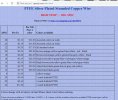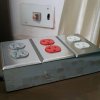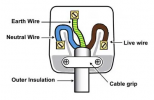To share with anyone interested in this subject. My favorite DIY cables pages are from VH Audio in the USA, where I reside. Here is the DIY cable URL:
Build your own Audiophile Power Cord
www.venhaus1.com
Not mentioned at all in this thread, is
my preference of not using any 15 Ampere rated IEC,
and using only 20 Ampere IECs, female and male.
My favorite and most cost effective high quality wire source is to buy Military Spec m22759/11 wire at surplus prices ( only ). Look up it's specifications. It is multi - stranded copper, the strands individually silver plated and it is sheathed in Teflon as the outer jacket. Lovely wire and decent sounding to my ears. I use it in 90% of the locations in my DIY tube amplifier builds, also. For AC line cords, 12 AWG, maybe even 10 AWG, would be my choice.
The best place to obtain this, at a very fair price, with AWG variety, and with color availability basis is a Surplus Electronics dealer in the USA, state of California. The business is called APEX, Jr. and the proprietor is Mr. Steve Slater. He is on line, on eBay , and also has an on-line catalog. A superb gentleman to do business with !!! Top notch, trustworthy.
Notice his posted availability and prices, which I am including herein. I prefer to reach him, to find out what he has available, in his current stock, as this changes a bit, colors and AWG-wise, from week to week.
Have fun, and please consider the use of 20 Amp IECs.

I am planning to get the Schurter IEC C13 plugs and GM/Crabtree Indian plugs and hook them up with Belden 8477 or 5000 cables. I guess if the device is only 2 pronged, then we dont need to bother about the earthing wire anyways.
Anybody tried the Belden 8477/5000 as power conductors?
On two wired devices, install a safety ground, and convert from 2 to 3 wires .













